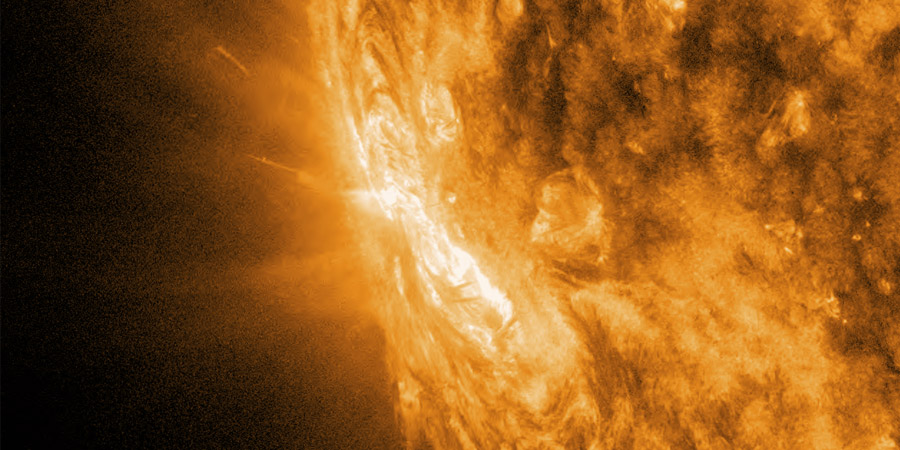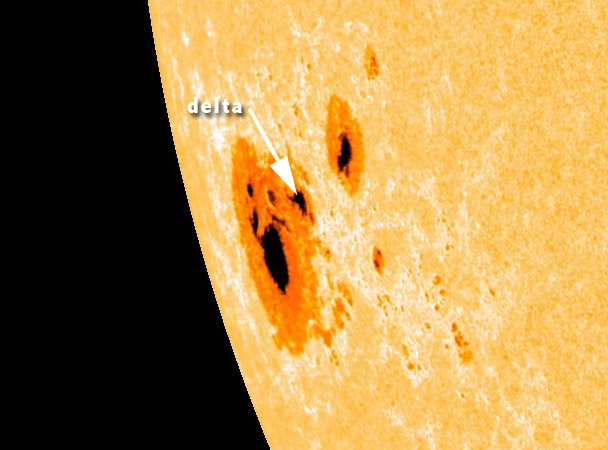M1.6 solar flare from sunspot region 2192 (old region 2172)
Saturday, 18 October 2014 10:31 UTC

Yesterday we saw the return of old sunspot region 2172 on the solar disk which is now numbered as sunspot region 2192. Sunspot region 2192 looks very big but it wasn't that active until this morning when a moderatly strong M1.6 flare erupted.
The M1.6 flare was not eruptive, no CME is expected from this event. Even if there was a small coronal mass ejection (CME) accompanied with the event, due to the position of this sunspot region near the limb, it won't be Earth directed.

Sunspot region 2192 looks big but it is surely not the biggest sunspot region of this cycle. It has a very large central leader spot which makes it look impressive. Now that sunspot region 2192 is fully into view, we can see it's magnetic layout better and judge it's flaring potential. The leading group of spots with the large umbra contains one delta spot in the western part making it a beta-gamma-delta region which has the capabilities of producing a strong flare. From the short period that it is in view it looks relatively stable. The large amounts of faculae around the region is a soup of crumbled penumbral area with a few tiny spots in it; those two tiny spots have an opposite polarity (a delta spot).
Thank you for reading this article! Did you have any trouble with the technical terms used in this article? Our help section is the place to be where you can find in-depth articles, a FAQ and a list with common abbreviations. Still puzzled? Just post on our forum where we will help you the best we can!
Latest news
Latest forum messages
Support SpaceWeatherLive.com!
A lot of people come to SpaceWeatherLive to follow the Sun's activity or if there is aurora to be seen, but with more traffic comes higher server costs. Consider a donation if you enjoy SpaceWeatherLive so we can keep the website online!

Space weather facts
| Last X-flare | 2025/03/28 | X1.1 |
| Last M-flare | 2025/04/18 | M4.4 |
| Last geomagnetic storm | 2025/04/16 | Kp8- (G4) |
| Spotless days | |
|---|---|
| Last spotless day | 2022/06/08 |
| Monthly mean Sunspot Number | |
|---|---|
| March 2025 | 134.2 -20.4 |
| April 2025 | 120.1 -14.1 |
| Last 30 days | 116.4 -25.9 |


